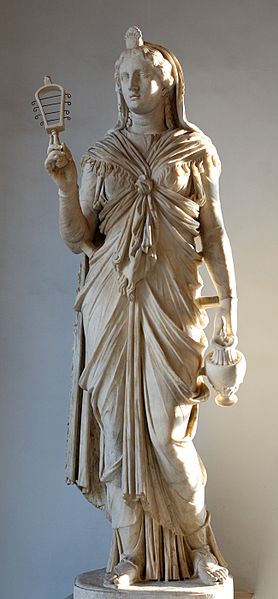The Secret Truth of Ceremony
Article By Zarina Screwvala
 Last year we had a very special gathering of philosophers in Mumbai, and I had the privilege of looking after the meals for this wonderful event. A volunteer was helping me and I remember, as we started our first tasting of the many meals to come, she said, “Let’s make this tasting a ceremony!” Suddenly the whole atmosphere changed. We took our spoons from the chef with attention and care, and slowly scooped up the dish at the same time. We smiled as we put it into our mouths, savoured the wonderful cooking and declared it excellent! The chef was delighted as indeed were all who watched. A mundane task was turned into a memorable and meaningful one. What a joy!
Last year we had a very special gathering of philosophers in Mumbai, and I had the privilege of looking after the meals for this wonderful event. A volunteer was helping me and I remember, as we started our first tasting of the many meals to come, she said, “Let’s make this tasting a ceremony!” Suddenly the whole atmosphere changed. We took our spoons from the chef with attention and care, and slowly scooped up the dish at the same time. We smiled as we put it into our mouths, savoured the wonderful cooking and declared it excellent! The chef was delighted as indeed were all who watched. A mundane task was turned into a memorable and meaningful one. What a joy!
Ceremonies are conducted all around us, everyday: The lighting of the Olympic torch, the opening ceremony of football games, the singing of a National Anthem, graduation ceremonies, ceremonies at birth, marriage and death, etc. Human beings have marked special moments through the use of ceremonies since times immemorial. But what if perhaps we were able to make every moment special?
The Japanese, for example, have created ceremonies for a host of seemingly insignificant aspects of daily life. There is a ceremony called Hanami, to observe the exquisite cherry blossom tree, which blooms for just one week of the year, in order to cultivate an appreciation and understanding of the impermanence of life. In Sumi-e, the ancient art of brush painting, art becomes ceremonial as it is performed with consummate skill and years of meditative practice, meant to deepen the understanding of the essential as opposed to the non-essential. The now famous tea ceremony also demonstrates how the day-to-day can be imbued with intention and significance by consciously bringing the best of oneself to the simplest and perhaps most ordinary of tasks, thus lifting ourselves out of the mundane, and into the meaningful for a few precious moments. Perhaps, we would say, this is how we should live every moment of our whole life.
But what fundamentally is a ceremony? A ceremony is a moment in time and space, which is filled with meaning, with the sacred, with what the ancient Egyptians called Neter, for those who participate and those who behold it. How might we bring meaning to our actions, and to our lives? Perhaps we might add conscious purpose to our every thought, word or deed, and perform our day to day actions with Truth, Beauty and Goodness. But the fact is we are not yet ready for it; it would take too much effort to put that much concentration and attention into every moment of our lives. Hence the ancient traditions found a way to do so within a deliberately limited construct of time and space, within which to elevate our consciousness through the use of our will. And then, as if by magic, mundane matter is imbued with Spirit. It becomes an active, moving, three-dimensional symbol created by the consciousness of those who lead the ceremony and those who follow it. In this manner, ancient traditions accessed what they called sacred time – an alternate dimension of time, which acts as a bridge, connecting the transient realm with the eternal, the domain of the gods. While ancient cultures differed in the specific details of how they performed their ceremonies, it is difficult to think of any human culture, through the millennia, that did not use ceremonies as an intrinsic part of living life with meaning.
In performing ceremonies, one might say that the Ancients invited the Gods, the Ideals, to participate among us as we mark special moments and spaces. Ceremonies create sacred spaces for the Divine, here on Earth. The ancient wise man did not plead with the Gods to give him all that he wanted; instead, the wise man always asked to be blessed with the ideals, the divine qualities; they asked to be bestowed with Goodness, Truth, Beauty and Justice, not just for themselves but for all living beings. So we can say that ceremonies serve two purposes: to invite Divinity to be a part of our Life and at the same time to raise our consciousness up towards the realm of the divine. Thus a ceremony is a bridge that can connect us with the sacred. If we can achieve this, even for the briefest moment, we might undergo profound transformation.
One might wonder then, is there an ideal way to perform a ceremony? The ancients knew that everything in nature can be used to add value and significance to a ceremony – that the elements in the right combination created the force of meaning that was needed at that time and place. Colours, stones, music, words of power, water, fire, flowers, fragrance, the use of potent symbols, the location of the temple, and the time of day, month or year all add value and meaning. But above all, the Ancients knew that it is our own consciousness that truly makes it a ceremony in the real sense of connecting with the Essence, with the Divine.
In today’s world it is perhaps fashionable to scoff at the very mention of a ceremony, writing it off as mere formality, or even superstitious ritual. In fact, we pride ourselves in dismissing them or worse, are cynical and disrespectful when we do participate. We go through the motions without connecting with the essence. Wedding vows, baptism rites, or even standing for the national anthem before a film begins at the cinema – how much of it do we really mean? The shallowness of materialism touches and often consumes each of us. The very concept of spiritual growth is mocked and we have allowed the new gods of material wealth to take over our lives, giving value to the external material things we accumulate, that will sooner or later be discarded. What we can see and taste and touch. And because these are external things that we value and set as our goals – more money, a bigger home or car – they will inevitably be lost to us. Thus the very things we value, our very goals, bring us pain and suffering.
Today we perform ceremonies to mark special occasions at which we ask for the blessings of the gods. We ask for good health, happiness, success, and material wealth. Sometimes we even bargain with the gods: “If you help me win this contract, then I will donate a brick of gold to your temple.” The Ancients would perhaps be bewildered by how we perform ceremony today.
This loss of the value and meaning would perhaps be tolerable if it were merely a human invention. And yet, each of us, at some point or other, have been moved by the beauty of the setting Sun, a moment which seems inexplicably potent with Neter, sacredness. We see that animals have their own ceremonies; all birds sing at the rising of the Sun. Plants unfurl new shoots in springtime. The four seasons mark the ceremonial cycles of time on Earth. It seems that all beings in Nature participate ceremoniously as part of Life. Indeed it seems that the ancients recognised that the Universe itself performs ceremonies, or rather the universe itself unfolds ceremoniously. And therefore it is not surprising that ancient civilizations endeavoured to participate as well. It is said that Stonehenge was built by the ancients to mark and celebrate the Summer Solstice. That the Great Pyramid at Giza, the temples at Teotihuacan and Machu Picchu are built as replicas of the Celestial on Earth, in order to invite these divine energies to the Earth. To be a bridge between the terrestrial and the celestial.
As students of Philosophy, as seekers of wisdom, what can we do with this sacred knowledge? Perhaps, we can make our own lives ceremonial. Perhaps we can learn to recognise that every aspect, every moment of our day-to-day lives can be imbued with meaning, attention and consciousness. How can we wake up in the morning, with the beauty and joy of the sunrise? How might we make and drink our coffee with appreciation and gratitude? With what energy do we enter our workplace and our homes? How do we make our words sacred, meaningful by filling them with truth and kindness? And finally, how might we die with grace and dignity, like the setting Sun…to the sound of birdsong, filled with awareness, beauty and the joy of knowing that we have truly lived! For then, we might discover that in truth, there is no Death. There is only Life. And Life itself is the greatest ceremony of all.
Image Credits: By Igor Ovsyannykov | unsplash | CC0
The entity posting this article assumes the responsibility that images used in this article have the requisite permissionsImage References
By Igor Ovsyannykov | unsplash | CC BY PD
Permissions required for the publishing of this article have been obtained




What do you think?